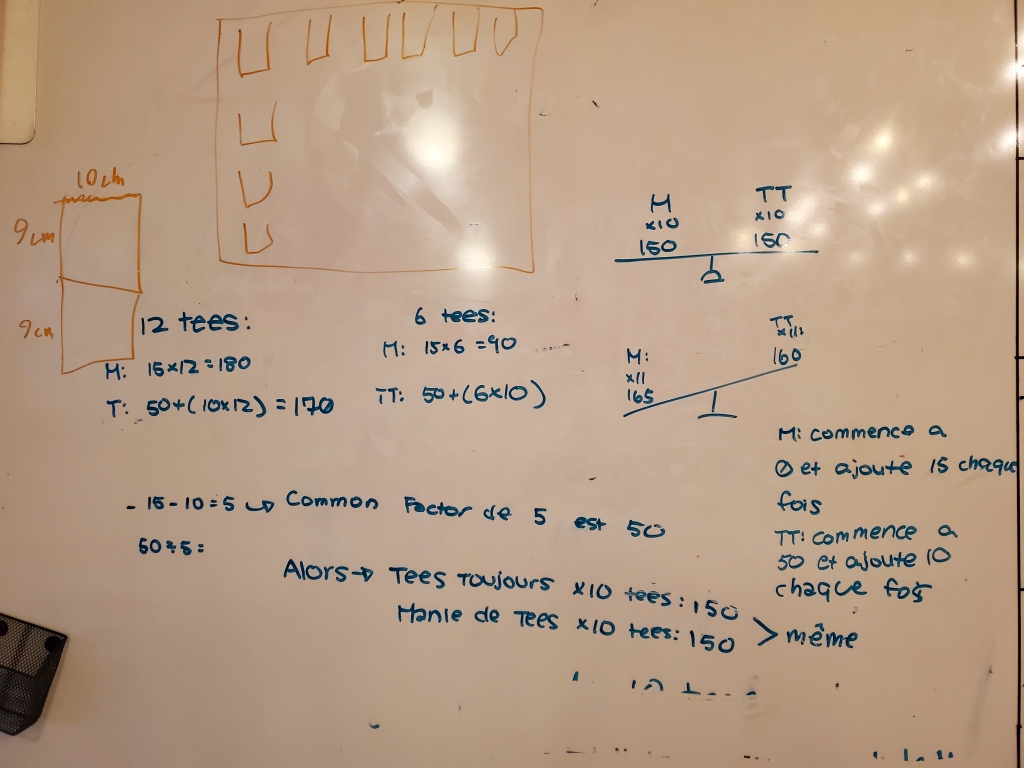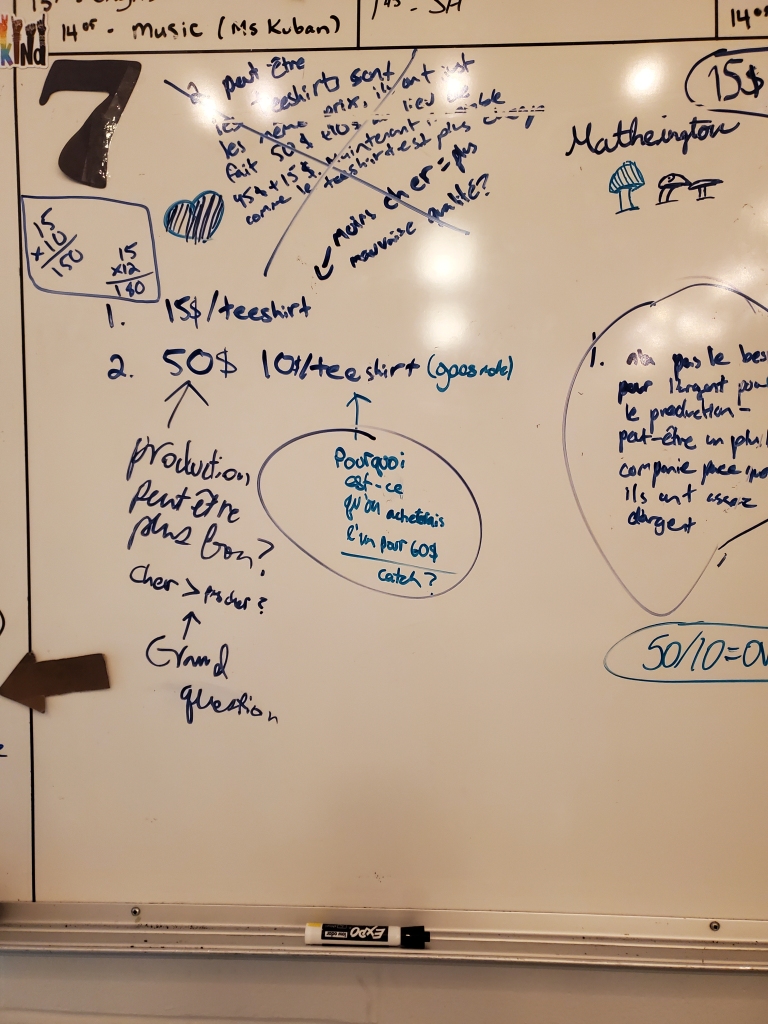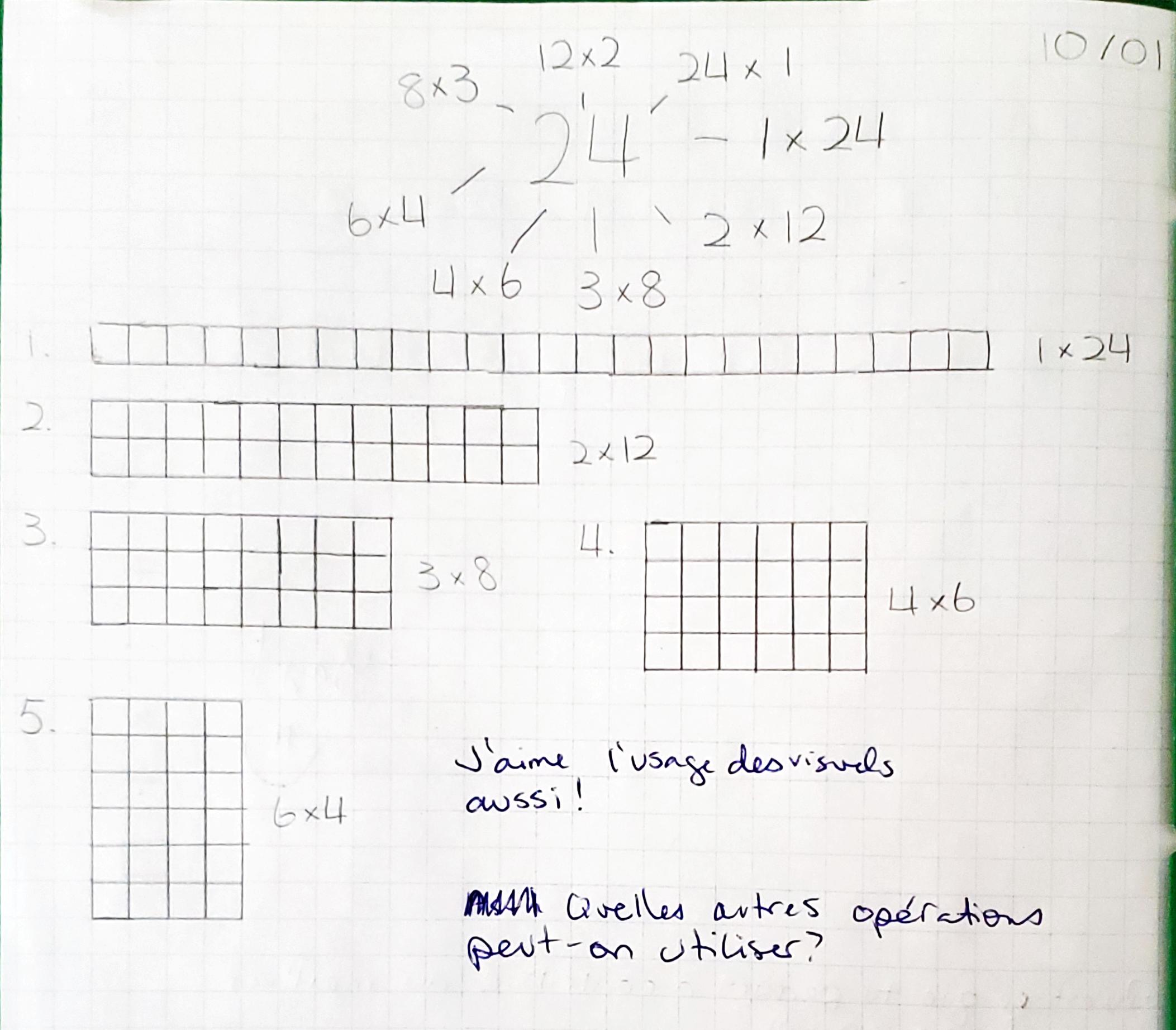Honest moment: last year, I attempted interleaving my curriculum. The students were exposed to everything I needed to teach, but I still don’t call the first attempt a win. There are definitely elements that I need to tweak and one was note-taking. Note-taking was not a featured thing, and because we moved from topic to topic, it should have been a super key part.
I put together a simple note-taking template and copies galore. The plan is start with one per section in our math binder (numeracy, fractions and proportions, patterns and algebra, probability and data analysis, geometry and measurement). As we spiral through content, we can always add to our notes (and, likely, more and more templates).
I knew that I needed to launch carefully to help students take good notes. It’s not a easy skill! Elementary students don’t have a lot of experience taking notes, and it usually consists of students frantically writing down whatever the teacher writes, word for word. “Wait!” they’d cry in past years, “I’m not done yet!”
I handed out the organizer and explained that I wanted students to work in groups to fill in the sections based on the addition strategies we’ve been looking at – but on the whiteboards. Playing cards were distributed, students went off to their groups, and off they went.
As they started, I noticed them writing things like, “Counting on fingers”, “Using manipulatives”, “Lining up numbers” and was baffled. What? Where did this come from? They were so off topic! Didn’t I say that this was supposed to be about the strategies we explored?
I called them back in, clarified and ended with “If I gave you a quiz about addition strategies that we looked at, would these notes be any use?” After a resounding “NO!” I urged them to make changes so that they were useful.
They obligingly went back to their boards and added a lot more. We did a quick consolidation and then I asked students to write down notes on their own sheets of paper, urging them to borrow anything they thought was helpful from any board – and adding more if they felt it was necessary.
The bell rang, and the students left for recess. I slumped down in my chair, feeling defeated. How were they so off base? Were my explanations that bad? (It should be added that I had not had a good night’s sleep the night before, combined with slight blahs from the rainy day, likely contributing to my despair.)
Wait!
When I sent the students to their visibly random groups (VRGs), they started trying to think of anything about addition they could recall. They were trying to create more content than I had given them. They were thinking! AND… I could see that they weren’t getting at what I hoped for because they were writing on vertical surfaces. One slow turn around the room was enough for me to catch that. I would have completely missed it if they were working on horizontal surfaces, especially if I had asked them to start taking notes on their own!
So maybe this wasn’t a misstep. This wasn’t a waste of time. This was their first attempt at note-taking in a building classroom. And yeah, building our note-taking is going to take a while, but we’ll get there. We have to go slow to go fast.










